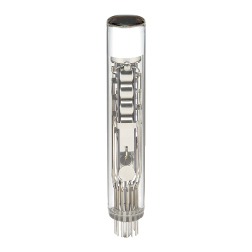A surface acoustic wave (SAW) filter is an electrical filter that uses sound waves to remove specific frequencies from a signal. When an electrical signal is supplied to the piezoelectric substrate that makes up the filter, sound waves are generated. The signal is then affected by these waves to remove the unwanted frequencies. Specialized electrical filters called SAW filters are used in a variety of applications.
How do SAW filters work?
SAW filters use a piezoelectric substrate, such as quartz, to generate surface acoustic waves. A set of input and output transducers on the surface of the substrate receive electrical signals, which cause them to generate waves. The vibration transducers generate acoustic waves as a result of the electrical signals, which travel through the substrate.
Step 1:
As the acoustic waves travel through the substrate, the electrical signals are affected by the interaction of the acoustic waves with the substrate. Depending on the design of the filter, certain frequencies are filtered out. This is achieved through the phenomenon of acoustic resonance, in which some acoustic wave frequencies are amplified while others are suppressed.
Step 2:
Another set of transducers on the surface of the substrate then outputs a filtered signal. The layout and design of the transducers and the substrate affect the frequency response of the filter. SAW filters can have high levels of selectivity, allowing them to pass desired frequencies with little distortion while filtering out unwanted frequencies.
Step 3:
These filters are often used in wireless communication systems, including mobile phones and GPS units, due to their compact size, low insertion loss, and good selectivity. Radar systems, television receivers, and medical devices are just some of their additional uses.
Features of sawtooth filter:
- Frequency signal with high precision, high stability, low phase noise, and low power consumption
- Signal processing with high frequency, high bandwidth, high selectivity, low loss, and small size
- Signal filtering with high quality factor, high isolation, high power capacity, and wide temperature range
Advantages of SAW filters:
Filters are particularly useful in situations where precise signal filtering is required, such as in wireless communication systems, electronic instruments, and medical devices, due to their high selectivity. These systems can improve the overall performance of the system by utilizing these filters to filter out unwanted signals and noise while maintaining the quality of the intended signal.
High Rejection Bandwidth: One of the advantages of these filters is that they are able to provide a large rejection bandwidth. Therefore, unwanted frequencies close to the intended signal frequency range can be successfully filtered out using these filters. By utilizing the acoustic resonance capabilities of the piezoelectric substrate, these filters can reduce signals over a wide frequency range while maintaining a high rejection bandwidth. Compared to other types of filters, such as active filters or LC filters, the higher rejection bandwidth can make the filters more useful when interference or noise from adjacent channels is a problem. For example, filters can be used in wireless communication systems to block unwanted signals from other channels, thereby reducing the possibility of signal interference and improving the overall quality of the connection.
Low Insertion Loss: Low insertion loss is one of the main advantages of employing these filters. When a signal passes through a filter, it experiences insertion loss, which is a drop in signal strength. Since these filters have low insertion loss, the signal quality is not significantly affected by their use. This reduces the amount of energy lost during signal transmission. SAW filters operate in a passive manner and do not require power to work. Low insertion loss is particularly important in systems where signal quality is critical. These systems can filter out unwanted signals and noise while maintaining the integrity of the system by utilizing these filters. These systems can remove extraneous signals and noise while maintaining the integrity of the desired signal by utilizing these filters. SAW filters are ideal for battery-powered devices because of their low insertion loss, which reduces power consumption.
High selectivity: High selectivity is another important advantage of employing these filters. “Selectivity” describes the ability of a filter to separate unwanted signals of similar frequencies from the signals it wants to pass. These filters can provide great selectivity by utilizing the acoustic resonance properties of the piezoelectric substrate. This filter causes surface acoustic waves passing through the substrate to interact with the signals passing through it. These waves are generated at a certain resonant frequency that matches the frequency of the desired signal under consideration.
Applications of SAW filters:
Due to their excellent selectivity, low insertion loss, and small size, these filters are used in a variety of applications across multiple industries. Here are some typical uses for these filters:
Wireless Communication Systems: Mobile phones, GPS, satellite communications, and wireless local area networks are just a few examples of devices that use these filters in wireless communications (WLAN). They are used to filter out unwanted frequencies to ensure that the intended signal is delivered and received with minimal jitter.
Consumer Electronics: SAW filters are used in consumer electronics such as television receivers, satellite radios, and digital radios to improve signal quality and reduce interference.
Aerospace and Defense: These filters filter out unwanted signals to ensure that important information is properly sent and received in radar systems, communication systems, and electronic warfare systems.
Industrial Automation: These filters filter out unwanted signals and guarantee accurate measurements are collected in industrial automation applications such as sensors and process control systems.
Medical Devices: These filters filter out extraneous signals and ensure accurate readings in medical devices including ultrasound equipment and patient monitoring systems.
Buy filters:
Suppliers:ITF (Integrated Technology Future) Products

ITF Co., Ltd. is a professional manufacturer of frequency control components, SAW filters, IF filters, RF filters, and resonators for the Korean electronics industry.
Our products SAW filters, IF filters, RF filters, and resonators have occupied a certain market share. SAW filters, IF filters, RF filters, and resonators are all certified by ISO 9001, ISO 14001, OHSAS 18001, and other international certifications, providing quality support. With strict control of the manufacturing process, we conduct a large number of online tests and inspections, including 100% final inspection of finished products, and have a traceable database of test results.
We focus on the principle of “innovation and high quality” and keep up with the rapid changes in technology and products by continuously investing in research and development.
View website:emi-ic.com
























